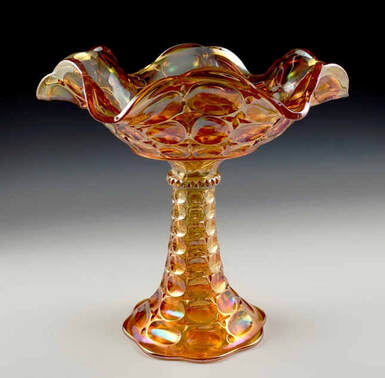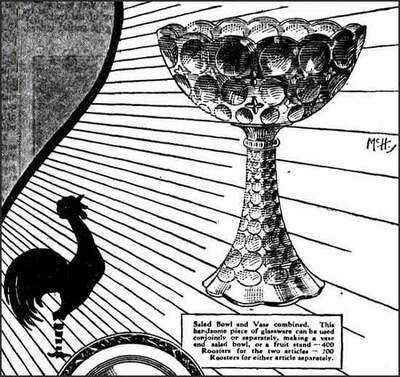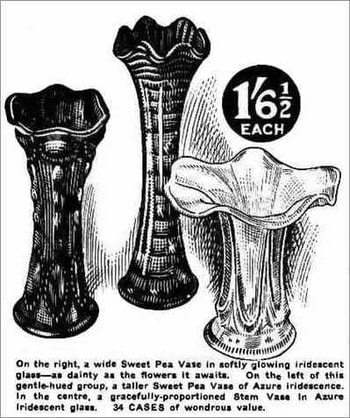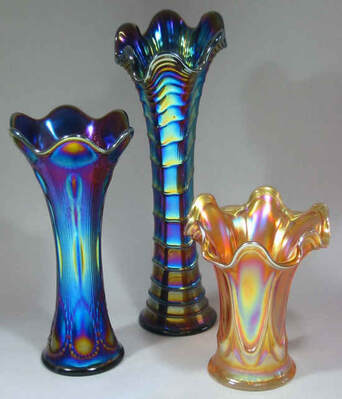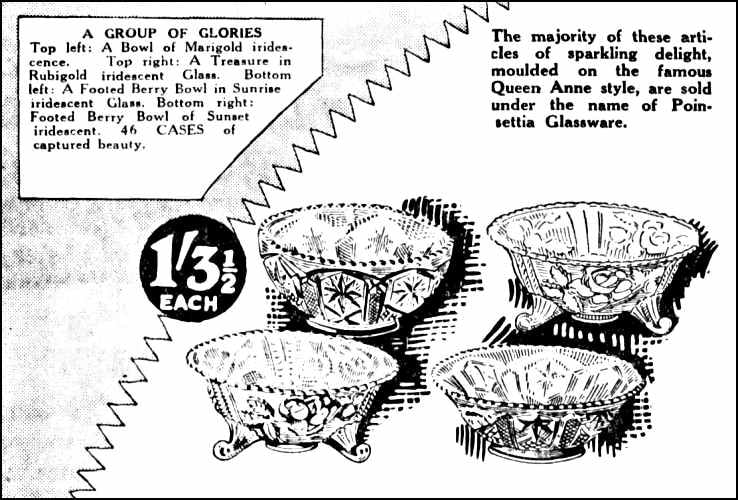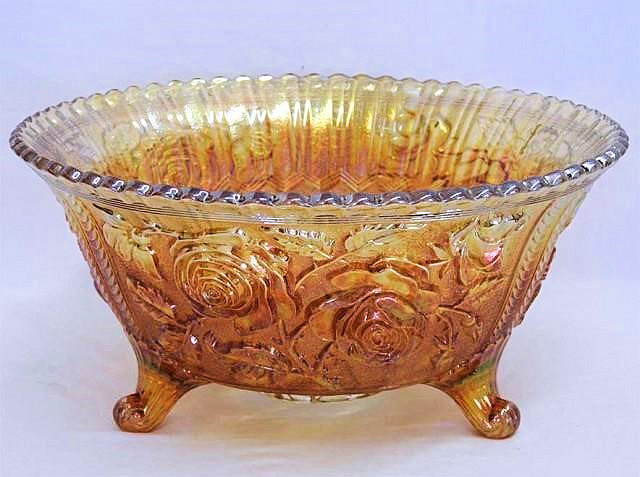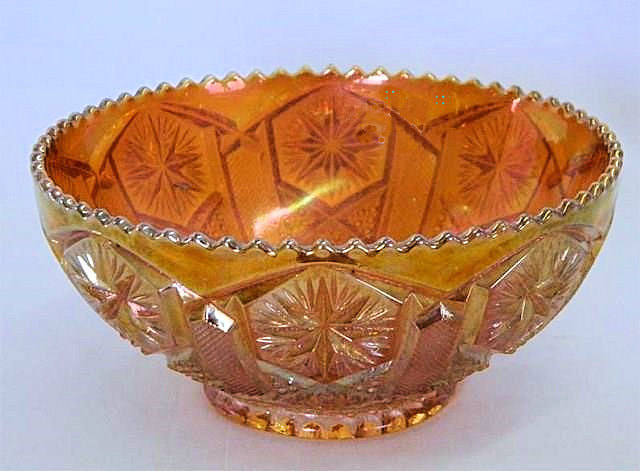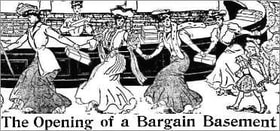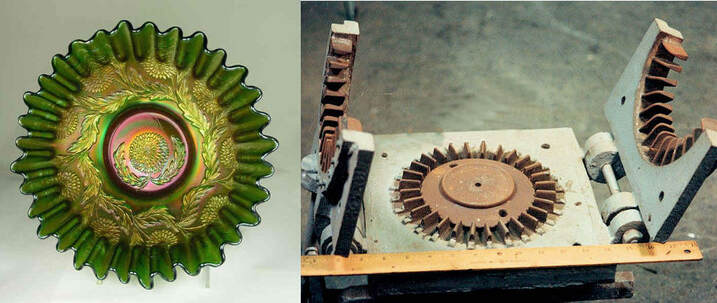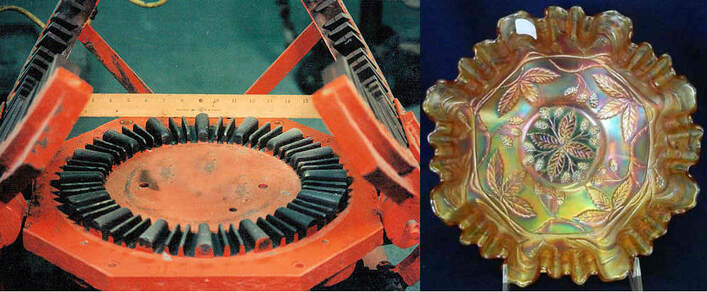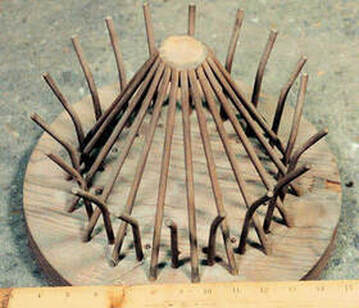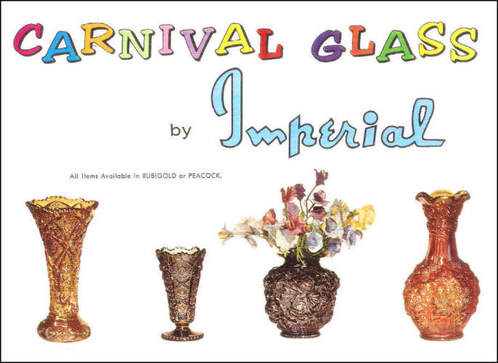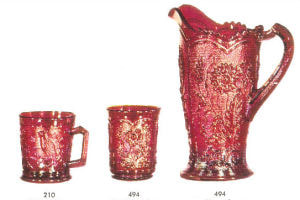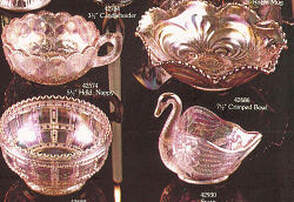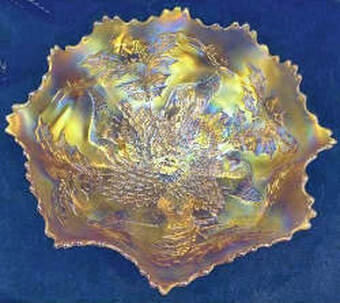NetworK ezine Issue 54. November 2019
Totally Devoted to Carnival Glass
Sell it to me!
We have had really great feedback on the old ads for Carnival Glass that we have been showing. It's fascinating to see how many of today's sales and marketing techniques, were used at the time when Classic Carnival Glass was being made.
How did the major glassmakers inform prospective buyers all about their wonderful glass? No television to watch ... no internet to browse ... no online "influencers". Just good, old-fashioned newspapers, catalogues, trade journals and magazines! Here are some more!
We have had really great feedback on the old ads for Carnival Glass that we have been showing. It's fascinating to see how many of today's sales and marketing techniques, were used at the time when Classic Carnival Glass was being made.
How did the major glassmakers inform prospective buyers all about their wonderful glass? No television to watch ... no internet to browse ... no online "influencers". Just good, old-fashioned newspapers, catalogues, trade journals and magazines! Here are some more!
The breath-taking Moonprint centrepiece, by renowned German maker Brockwitz (above, left) combines the large bowl with the upturned vase. Vases, sugar bowls and celeries could all be upturned and fitted neatly into the flanged base of matching Brockwitz bowls.
This was an intentional combination, and it was illustrated in a number of fascinating ads in the Australian press in the 1920s, such as the one shown above, right. This ad was doubly interesting, as it was for a premium sales offer, in which customers were urged to “Save Your Roosters”! So, what was a “Rooster”, and how did they earn this splendid Carnival Glass? They were coupons that customers collected off the wrappers of “Australian Soaps Ltd.” products – detergents, cleaners and household soaps – typically 1 to 4 coupons per item. All sorts of gifts were available in exchange for the coupons. The Moonprint bowl and vase that made up the centrepiece illustrated would require 400 Rooster coupons. That’s a lot of soap!
The text in the box below the Rooster ad reads: “Salad Bowl and Vase combined. This handsome piece of glassware can be used conjointly or separately, making a vase and salad bowl, or a fruit stand – 400 Roosters for the two articles – 200 Roosters for either article separately.”
Cases of Captured Beauty and Wondrous Value
Classic American Carnival appeared in plenty in Australian stores in the 1920s.
|
Ninety-four years ago, in October 1925, a fascinating full-page ad was featured in a Sydney newspaper, “The Sun”. Included in the goods on offer were “34 CASES of wondrous value”. The promotion was for a Bargain Basement* style store called Brightlights, and it included one of the most beautifully represented Carnival vase ads of the era. The three vases shown were from Imperial, and judging by the drawing and the text, the vases are, from left to right: purple Beaded Bullseye, purple Ripple and marigold Parlour Panels. The 1925 ad is transformed into shimmering, colourful Carnival Glass by Joan Doty’s exquisite photograph of the same three vases, shown, far right. |
Above: three Imperial vases.
Left to right: purple Beaded Bullseye, purple Ripple and marigold Parlour Panels. Photo courtesy Joan Doty. |
In another part of the same Brightlights ad, "46 CASES of captured beauty" were offered as shown on the right. It presented four Imperial bowls, and two patterns were featured: Star and File (top left and bottom right) and Open Rose (the footed bowls top right and bottom left).
The 1925 text is fascinating and deserves closer inspection, for this is the earliest record we have found so far where the term marigold is used to describe the Carnival Glass colour.
Look at the first sentence in the caption below the line “A Group of Glories” – the Star and File bowl is described as “A Bowl of Marigold Iridescence”.
A variety of promotional buzzwords – Rubigold, Sunrise and Sunset – are then used to describe the other bowls, that were probably different tones and shades of what we refer to today as marigold. (And of course, Rubigold is the actual term that Imperial themselves gave to what we call marigold).
|
Now look at the block of text top right. The designs are described as “Queen Anne style” and the ad goes on to say that the items are called “Poinsettia Glassware”. We were fascinated by this description, which was probably just ad-speak and 1920s hyperbole designed to sell goods. But that term “Poinsettia Glassware” really intrigued us, and we wondered if any readers have come across this. Do let us know if you have.
Marigold is the one colour that embraces and personifies the very essence of Carnival Glass. It was the first colour used by the Classic Carnival makers, evoking earlier iridescent glass that originated in Europe as well as Tiffany in the USA. |
Imperial bowls in marigold. Open Rose (above),
and Star and File. Courtesy Seeck Auctions. |
|
Read all about Marigold here: ”golden iridescent blendings reflecting rainbow hues" * The Bargain Basement Did you know that The Bargain Basement was but one of the brilliant sales ideas of a certain Mr Harry Selfridge when he worked at Marshall Field Department store in Chicago in the 1880s? Read the full story! Click on the image on the right or here: The Bargain Basement |
Crimp Your Style!
One of the characteristics that makes Carnival Glass so attractive to collectors is the way that the glassmakers used various techniques to make each piece look individual. One such technique was to shape the bowls to make them distinctly different in appearance - but how did they do it?
One of the characteristics that makes Carnival Glass so attractive to collectors is the way that the glassmakers used various techniques to make each piece look individual. One such technique was to shape the bowls to make them distinctly different in appearance - but how did they do it?
|
Shown on the right is a green Fenton Ten Mums bowl with a fabulous edge treatment - it is called a fine crimp, also known as a continuous crimp and a candy ribbon edge. On the far right is an example of how they achieved it - by using a foot operated crimping device. The bowl in its original plain shape was pressed down onto the crimp (whilst the glass was still hot and malleable), and the "jaws" of the crimp were closed over it to create the crimped edge shape. |
|
Shown here on the far right is a marigold Fenton Wild Blackberry bowl (photo courtesy of Seeck Auctions), with a splendid three-in-one edge treatment. This type of edge was also called by (the late) Frank Fenton a fruit crimp but his preferred name for it was a "two and one" (because there are two small crimps and one larger one in each set of three). On the immediate right is the crimping device used to create the edge shape. |
We are so privileged that Marty Seufer gave us access to, and permission to use, work created by his father, (the late) Howard Seufer, glass engineer and
|
Fenton expert. Howard made a vast number of presentations and seminars, passing on a wealth of educational information for collectors, and we are honoured to be able to feature his work on our website. Recently, we have added a third section to the series “Features of Pressed Glass”, in which Howard explains ruffles and crimping, illustrated with a series of clear diagrams. Here is the start of Howard’s expert information.
We have added to this with some fascinating images of the actual apparatus that was used, such as the item shown on the right. You could be forgiven for thinking it was some primitive instrument of torture, but in fact it is a Fenton drop crimp apparatus used to form the edges of glass items.
Be sure to read the full article (with its links to two previous sections): Ruffles and Crimping. |
The images of the crimping devices shown above are courtesy of the Fenton Family and Fenton Art Glass Company.
Viva Imperial
|
In 1962, around the time that Chubby Checker was singing “Let’s Twist Again”, Imperial released ads offering “Genuine and authentic ‘Carnival Glass’ American Handmade by Imperial USA. From moulds used 60 years ago.” The first Carnival collectors began acquiring their glass in the 1930s (it was Classic Carnival from the early years of its introduction c.1908), and the first published article on Carnival as a collectable was in 1952. It was written by Gertrude Conboy. Formal Carnival Glass collecting started in the 1950s, and gained speed in the 1960s – and that was when Imperial decided to re-issue their Carnival Glass to tap into the growing popularity of this iridised glass. It was a smart marketing idea that was quickly adopted by other companies, such as Joe St. Clair, Westmoreland and (a little later) Fenton. The ad on the right is a selected extract from a 1960s Imperial ad. The complete ad, full size, is on our website, along with a lot more information, old newspaper ads, and details of the Imperial moulds that were revived for their Contemporary production. It's all in our latest feature article: Imperial in the 1960s – the Contemporary Carnival Revival. |
Extract from a 1960s Imperial ad for their re-issued Carnival Glass.
|
Be sure not to miss these - the latest additions to our Contemporary Imperial catalogues:
|
Imperial made Sunset Ruby Carnival from the late 1960s into the early 1970s. Here is a catalogue page showing some of the pieces made.
Click on the image, or here: Imperial Sunset Ruby |
Imperial made Pink Carnival from 1978 to 1982.
Here is a great catalogue page from then. Click on the image, or here: Imperial Pink |
|
Conboy and Plummer - unsung heroes!
Many collectors will have heard of the early Carnival Glass pioneers, Marion Hartung and Rose Presznick ... but let's not forget May Plummer and Gertrude Conboy! From Philadelphia and Kansas respectively, they shared a deep interest in Carnival Glass, which they recorded in fascinating correspondence described as “A remarkable insight into the Carnival heritage”. In August 1944, May Plummer wrote that she had: "a beautiful piece called my Christmas dish. It is an orange 10 inch bowl with three feet ... a reindeer and holly pattern on top. This is the only one I have seen and I paid $1.74 for it a year ago." Of course we now know this item to be Fenton's Stag and Holly, as shown on the right. To read the Conboy and Plummer story, click on the image or go here: The Earliest Carnival Pioneers. |
Privacy and the use of your information: we only use your name and email address to send you your FREE Carnival Glass NetworK ezine. We will not share your name or email address with anyone else, or use it for any other purpose. You can change your mind about receiving your NetworK ezine at any time by clicking the unsubscribe link at the foot of every issue, or by emailing us at [email protected]
Join us on Facebook
We invite you and your friends to join us all on NetworK's fast growing and very active Facebook Group (link is below), and if you have missed any of the previous issues of NetworK and NetworK Specials, they are all here: Back Issues.
We invite you and your friends to join us all on NetworK's fast growing and very active Facebook Group (link is below), and if you have missed any of the previous issues of NetworK and NetworK Specials, they are all here: Back Issues.

